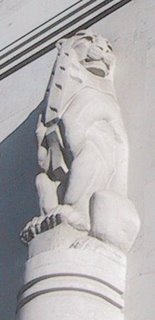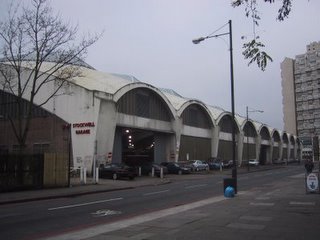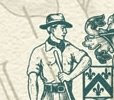Wheel Spire Dome Office Flat

These five buildings and structures rise above the South London streets. Each has its own story. Some have stayed the same, others have moved from one use to another.
First we have the "London Eye" also known as the Millennium Wheel. It is now iconic, but I remember sitting on the Embankment in September 1999 watching them fail to hoist it from its horizontal position, making it another national embarrassment.
Next is the spire of Christ Church and Upton Chapel, physical home of www.church.co.uk (now that's what I call a website address). There is the suggestion that the stars and stripes on its spire link to Abraham Lincoln's family who contributed to the original building.
Third is the dome of the Imperial War Museum, a radical transformation of a mental asylum. As a kid I just loved going there to see tanks and fighter planes up close. Now it's the human stories I go for, and I never come out laughing.
The Shell Centre comes next. This is the Upstream building and is still used as offices, unlike other parts of the complex which have become flats. The architects wanted a building nearly twice as high; I'm glad they weren't allowed. Its best moment is as a projection screen for events such as the poppy drop in November.
Last we have a block of flats, which got in the paper when someone asked £4,500,000 for a one bedroom flat. For me it isimportant to note that it used to be the headquarters of MI6, the British spies now relocated to a landmark building. This block was never interesting enough to feature in a James Bond movie.
 |  |  |  |  |



